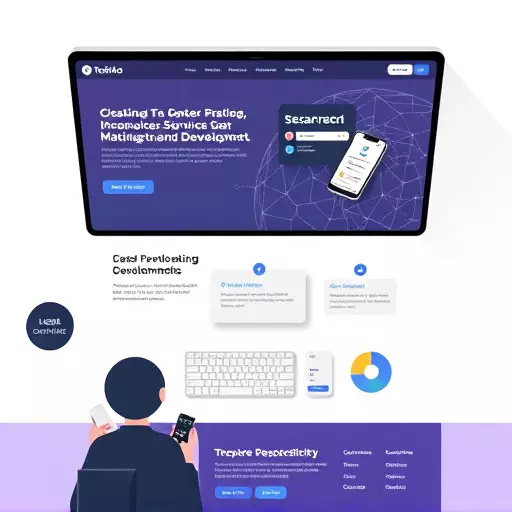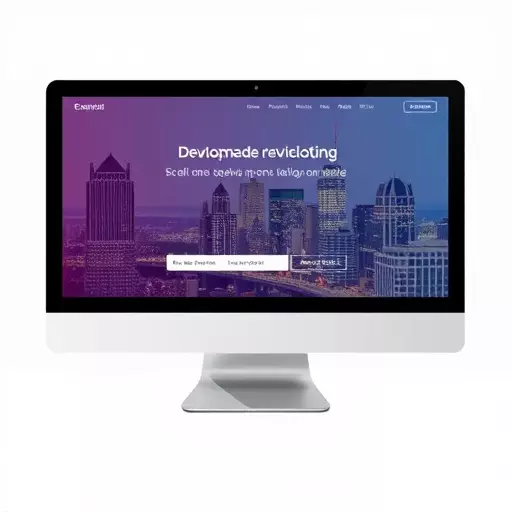Website development services in Toledo harness the power of both front-end and back-end technologies to deliver exceptional online experiences. Front-end specialists create visually appealing interfaces using HTML, CSS, and JavaScript, while back-end developers build server infrastructure, manage databases, and ensure data security. This collaborative effort results in dynamic, business-focused websites that enhance user engagement, driving digital success for local companies through effective website development services Toledo offers.
Dynamic website development is transforming digital landscapes, enabling interactive and engaging user experiences. This article explores the fundamentals of dynamic web creation, delving into the distinct roles of front-end and back-end development and their seamless integration. We highlight the significance of local expertise in Toledo’s website development services, showcasing how it delivers global-level results. Additionally, we provide strategic insights for building robust online presences, emphasizing the importance of dynamic websites in today’s digital competitive market, all while incorporating relevant SEO keywords.
- Understanding Dynamic Website Development: The Basics
- Front-end vs Back-end: Key Differences and Their Integration
- The Role of Website Development Services in Toledo: Local Expertise for Global Results
- Building a Successful Online Presence: Strategies for Effective Dynamic Websites
Understanding Dynamic Website Development: The Basics

Dynamic website development is a process that goes beyond static web design, allowing websites to change and interact based on user input and data from various sources. At its core, it involves seamlessly integrating front-end and back-end technologies to create engaging, responsive, and data-driven online experiences.
In Toledo, top-tier website development services often harness the power of front-end and back-end development. Front-end development focuses on building the user interface, ensuring a visually appealing and intuitive design that captivates visitors. Back-end development, on the other hand, involves creating server-side applications, managing databases, and handling data security, all crucial for delivering dynamic content effectively. This collaborative effort results in robust, interactive websites tailored to meet specific business needs, enhancing user engagement and driving online success.
Front-end vs Back-end: Key Differences and Their Integration

In the realm of website development, understanding the distinct roles of front-end and back-end is crucial for crafting robust online platforms. Front-end development, often referred to as client-side development, is the art of designing and coding what users directly interact with on a website. It involves creating visually appealing interfaces using HTML, CSS, and JavaScript to ensure an intuitive user experience. On the other hand, back-end development (or server-side development) is the unsung hero behind every dynamic website. It deals with the server, database, and application logic, enabling data storage, processing, and communication between the front-end and backend systems.
These two components are integral to each other; their seamless integration makes a website functional and engaging. Back-end developers build the infrastructure that powers the site, while front-end developers turn that power into an interactive experience for users in Toledo seeking website development services. Effective collaboration between these teams results in a harmonious digital experience that captures and retains visitors’ attention.
The Role of Website Development Services in Toledo: Local Expertise for Global Results

In the competitive digital landscape, a robust online presence is non-negotiable for businesses aiming to thrive. This is where website development services in Toledo step into the spotlight. Local agencies and freelancers offer a unique advantage: combining deep knowledge of the community with cutting-edge technical skills. They play a pivotal role in crafting not just visually appealing but also highly functional websites, catering to both front-end and back-end requirements.
Front-end development ensures that a website’s user interface is intuitive and aesthetically pleasing, enhancing user experience. Back-end development, on the other hand, involves the server, database, and application logic, ensuring smooth data processing and secure interactions. By leveraging local expertise for global results, businesses in Toledo can create dynamic websites tailored to their unique needs, ultimately driving engagement, conversion, and growth.
Building a Successful Online Presence: Strategies for Effective Dynamic Websites

Building a strong online presence is crucial in today’s digital era, and dynamic website development plays a pivotal role in achieving this goal. When it comes to creating effective websites, Toledo-based businesses often turn to a blend of robust front-end and back-end development strategies. Front-end development focuses on the visual elements and user experience, ensuring that the site is aesthetically pleasing and intuitive for visitors. This includes clean design, seamless navigation, and responsive layouts that adapt to various devices.
Back-end development, on the other hand, involves the server-side programming and database management that power the website’s functionality. Skilled developers in this area create dynamic content, implement security measures, and optimize performance. By integrating these two key aspects of website development, businesses can offer a seamless user experience while also ensuring their online platform is scalable, secure, and capable of delivering valuable content to attract and retain customers. This strategic approach helps Toledo-based companies stand out in the competitive digital landscape.


